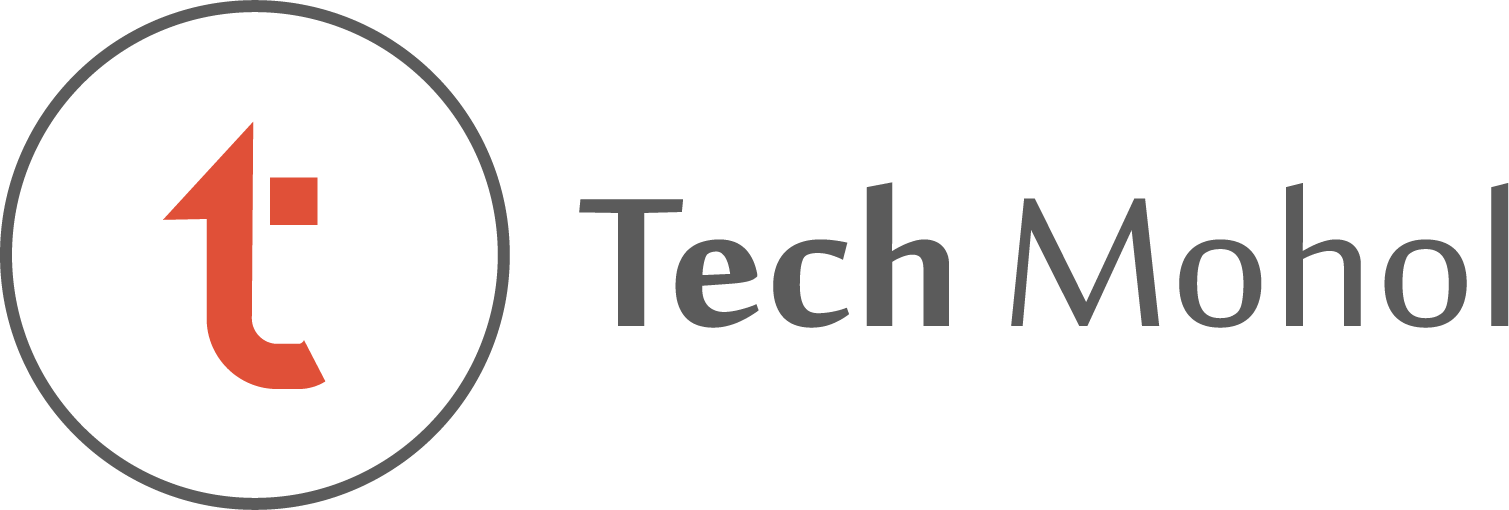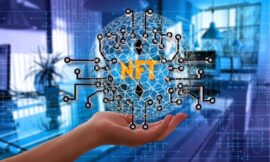With the rapid advancement of technology, the digital landscape is constantly evolving. As we approach 2025, it’s crucial to examine the future of cybersecurity. The ever-growing sophistication of cyber threats necessitates proactive measures to protect individuals, businesses, and governments from potential harm. In this blog post, we will explore what cybersecurity might look like in 2025 and the key trends that are expected to shape the industry.
Artificial Intelligence and Machine Learning in Cybersecurity:
By 2025, artificial intelligence (AI) and machine learning (ML) will play a pivotal role in cybersecurity. AI-powered systems will be capable of analyzing vast amounts of data, detecting patterns, and identifying anomalies to prevent cyberattacks. ML algorithms will continuously learn from new threats, adapt to changing attack vectors, and enhance the efficiency of cybersecurity measures. This integration of AI and ML will empower security teams to respond swiftly and effectively to emerging threats.
Zero Trust Architecture:
The traditional perimeter-based security approach will become obsolete in 2025. Zero Trust Architecture (ZTA) will gain prominence as organizations shift towards a more comprehensive and secure model. ZTA revolves around the principle of “never trust, always verify,” where users and devices are continually authenticated and authorized, regardless of their location within the network. This approach ensures that even if an attacker infiltrates the network, their access to critical resources remains restricted, minimizing the potential damage.
Quantum-resistant Cryptography:
With quantum computing on the horizon, concerns about its potential to break traditional cryptographic algorithms are growing. By 2025, cybersecurity will witness a transition towards quantum-resistant cryptography, which employs algorithms that can withstand attacks from quantum computers. This proactive step will safeguard sensitive data and ensure the confidentiality, integrity, and authenticity of communications in the quantum era.
Internet of Things (IoT) Security:
The proliferation of IoT devices will continue to expand in 2025, bringing numerous benefits but also introducing new security challenges. As the number of connected devices increases, so does the potential attack surface. Therefore, robust IoT security practices will be vital to protect against device vulnerabilities and unauthorized access. IoT manufacturers will need to prioritize security from the design phase, implement regular software updates, and establish stringent authentication and encryption protocols to mitigate risks.
Enhanced Privacy Protection
The growing concerns surrounding data privacy will lead to stricter regulations and improved privacy protection measures by 2025. Governments and organizations will prioritize transparency and user consent regarding data collection and processing. Encryption and data anonymization techniques will become more prevalent to secure personal information, and privacy-centric technologies like differential privacy will gain traction. Additionally, decentralized technologies, such as blockchain, will help ensure data integrity and user control over their digital identities.
Cybersecurity Workforce and Collaboration
The demand for skilled cybersecurity professionals will continue to rise in 2025. To combat evolving threats effectively, organizations will invest in training programs and partnerships with educational institutions. Collaborative efforts between public and private sectors will become essential, fostering information sharing, threat intelligence collaboration, and joint incident response. Governments will promote cybersecurity awareness campaigns to educate individuals and small businesses, empowering them to adopt best practices and protect against cyber threats.
Rise of Cyber Threats and Advanced Persistent Threats (APTs)
Unfortunately, as cybersecurity measures advance, so do the techniques and sophistication of cyber threats. In 2025, we can expect a surge in cyberattacks, including Advanced Persistent Threats (APTs). APTs are long-term targeted attacks by skilled adversaries that aim to infiltrate systems, remain undetected, and extract valuable information over an extended period. These threats often combine various attack vectors and leverage social engineering techniques to deceive users and gain unauthorized access. As such, cybersecurity professionals will need to stay vigilant, continuously update their knowledge, and deploy advanced threat detection and response mechanisms.
Cloud Security
Cloud computing will continue to be a dominant force in 2025, providing scalable infrastructure and services. As organizations increasingly rely on cloud environments, securing these platforms will be paramount. Cloud security will entail robust identity and access management protocols, encryption of data at rest and in transit, and comprehensive auditing and monitoring capabilities. Providers will enhance built-in security features, and organizations will implement multi-cloud strategies to mitigate risks associated with single points of failure.
Biometric Authentication and Behavioral Analytics
Passwords are notoriously vulnerable to breaches and human error. By 2025, biometric authentication methods, such as fingerprint, iris, or facial recognition, will become more prevalent. These methods offer a higher level of security by relying on unique biological traits that are difficult to replicate. Additionally, behavioral analytics will play a significant role in user authentication. By analyzing patterns of user behavior, such as typing speed, mouse movements, and device usage, suspicious activities can be identified, enabling timely response to potential threats.
Ethical Hacking and Bug Bounty Programs
To combat cyber threats effectively, organizations will increasingly embrace ethical hacking and bug bounty programs in 2025. Ethical hackers, also known as white-hat hackers, are employed to identify vulnerabilities and weaknesses in systems and networks. Bug bounty programs incentivize security researchers to discover and report vulnerabilities, ensuring that organizations can patch them promptly. These initiatives promote a proactive approach to cybersecurity, enabling companies to strengthen their defenses by leveraging the expertise of the global security community.
Government and International Collaboration
Cybersecurity is a global challenge that requires collaboration among governments, international organizations, and industry stakeholders. By 2025, we can expect an increased focus on international cooperation to combat cyber threats. Governments will establish cybersecurity frameworks, information sharing platforms, and joint response initiatives to address cross-border cybercrime. International agreements and treaties will play a crucial role in establishing norms and regulations to govern cyberspace, ensuring a coordinated and unified response against cyber threats.
Conclusion
In 2025, the cybersecurity landscape will be characterized by advancements in technology, increased collaboration, and the ever-present challenge of evolving cyber threats. Artificial intelligence and machine learning will strengthen defense mechanisms, while zero trust architecture will reshape the traditional security paradigm. Quantum-resistant cryptography, IoT security, enhanced privacy protection, and cloud security will address emerging risks. Ethical hacking, biometric authentication, and bug bounty programs will foster a proactive approach to cybersecurity. Ultimately, the concerted efforts of governments, organizations, and individuals will be crucial in building a resilient cybersecurity ecosystem capable of safeguarding our digital future.
FAQ
Q1: What is cybersecurity?
A1: Cybersecurity refers to the practice of protecting computer systems, networks, and data from unauthorized access, theft, damage, or disruption, ensuring the confidentiality, integrity, and availability of information.
Q2: What are the common types of cyber threats?
A2: Common types of cyber threats include malware (viruses, worms, ransomware), phishing attacks, social engineering, DDoS attacks, insider threats, and advanced persistent threats (APTs).
Q3: What is zero trust architecture?
A3: Zero Trust Architecture (ZTA) is a security model that requires continuous verification and authentication of users and devices, regardless of their location within a network. It assumes that no user or device should be inherently trusted, minimizing the potential damage if an attacker gains access.
Q4: How will artificial intelligence (AI) and machine learning (ML) impact cybersecurity?
A4: AI and ML will enhance cybersecurity by automating threat detection, analyzing large amounts of data for patterns and anomalies, improving incident response, and adapting to emerging threats more effectively.
Q5: What is quantum-resistant cryptography?
A5: Quantum-resistant cryptography refers to cryptographic algorithms that can withstand attacks from quantum computers, which are exponentially more powerful than traditional computers. These algorithms ensure data security in the quantum computing era.
Q6: How can organizations improve IoT security?
A6: Organizations can enhance IoT security by implementing strong authentication and encryption protocols, regularly updating software, conducting vulnerability assessments, and promoting a security-first approach during the design and development of IoT devices.
Q7: What is differential privacy?
A7: Differential privacy is a technique used to protect the privacy of individual data in aggregate analysis. It adds statistical noise to data to prevent the identification of specific individuals while still providing useful insights.
Q8: What role does the workforce play in cybersecurity?
A8: Skilled cybersecurity professionals play a vital role in implementing effective security measures, responding to threats, and ensuring the overall resilience of systems. They continuously update their knowledge to stay ahead of emerging threats.
Q9: What are APTs, and how do they differ from other cyberattacks?
A9: Advanced Persistent Threats (APTs) are targeted attacks conducted by skilled adversaries over an extended period. APTs are often stealthy, combining multiple attack vectors and leveraging social engineering techniques to infiltrate systems and extract valuable information.
Q10: How can cloud security be strengthened?
A10: Cloud security can be enhanced through robust identity and access management, data encryption, regular auditing and monitoring, implementing multi-cloud strategies to minimize single points of failure, and staying updated with cloud provider security features.
Q11: What is biometric authentication?
A11: Biometric authentication uses unique biological traits, such as fingerprints, iris patterns, or facial features, to verify a person’s identity. It provides a higher level of security compared to traditional passwords.
Q12: What is the role of ethical hacking and bug bounty programs in cybersecurity?
A12: Ethical hacking involves authorized individuals, known as white-hat hackers, identifying vulnerabilities in systems to help organizations improve their security. Bug bounty programs incentivize security researchers to discover and report vulnerabilities, allowing organizations to patch them before malicious hackers exploit them.
Q13: Why is international collaboration important in cybersecurity?
A13: International collaboration is crucial in cybersecurity to address cross-border cyber threats and share threat intelligence. It enables the development of global standards, regulations, and coordinated responses to combat cybercrime effectively.
Q14: How can individuals protect their cybersecurity?
A14: Individuals can protect their cybersecurity by using strong, unique passwords, enabling two-factor authentication, being cautious of suspicious emails and links, keeping software and devices updated, and regularly backing up important data.
Q15: What are the potential risks associated with IoT devices?
A15: Risks associated with IoT devices include unauthorized access, data breaches, privacy concerns, lack of device security updates, and the potential for IoT devices to be used as entry points to compromise larger networks.
Q16: How can organizations create a cybersecurity-aware culture?
A16: Organizations can create a cybersecurity-aware culture by implementing employee training programs, conducting regular security awareness campaigns, promoting a “security-first” mindset, and fostering a culture of reporting potential security incidents.
Q17: What are the key components of a comprehensive cybersecurity strategy?
A17: A comprehensive cybersecurity strategy includes risk assessments, strong access controls, regular security audits, incident response plans, employee awareness programs, encryption of sensitive data, network monitoring, and ongoing updates to security measures.
Q18: How does encryption contribute to cybersecurity?
A18: Encryption ensures that data is converted into a secure, unreadable format, making it challenging for unauthorized individuals to access or interpret. It helps protect the confidentiality and integrity of sensitive information.
Q19: What are the potential consequences of a cybersecurity breach?
A19: Consequences of a cybersecurity breach can include financial losses, reputational damage, legal and regulatory implications, loss of customer trust, operational disruptions, and potential theft or compromise of sensitive data.
Q20: How will emerging technologies impact the future of cybersecurity?
A20: Emerging technologies, such as artificial intelligence, quantum computing, blockchain, and IoT, will impact the future of cybersecurity. While they bring new opportunities, they also introduce new risks and require proactive security measures to mitigate potential threats.






